If you take a look at the fft of the image you can clearly see the strong frequencies that are causing the pattern in the image.

You need to create a notch filter which zeros out the region around those high peaks. I tried using Gaussian notch filters for this operation and the resulting spectrum looked something like this.

The ifft image (with contrast enhanced) turns out to be

Here's some MATLAB code used to build and apply the filter
I = imread('YmW3f.png');
ft = fftshift(fft2(I));
[m,n] = size(ft);
% define some functions
norm_img = @(img) (img - min(img(:))) / (max(img(:)) - min(img(:)));
show_spec = @(img) imshow(norm_img(log(abs(img)-min(abs(img(:)))+1.0001)));
gNotch = @(v,mu,cov) 1-exp(-0.5*sum((bsxfun(@minus,v,mu).*(cov\bsxfun(@minus,v,mu)))));
% show spectrum before
figure();
show_spec(ft);
% by inspection
cx = 129;
cy = 129;
% distance of noise from center
wx1 = 149.5-129;
wx2 = 165.5-129;
wy = 157.5-129;
% create notch filter
filt = ones(m,n);
% use gaussian notch with standard deviation of 5
sigma = 5;
[y,x] = meshgrid(1:n, 1:m);
X = [y(:) x(:)].';
filt = filt .* reshape(gNotch(X,[cx+wx1;cy+wy],eye(2)*sigma^2),[m,n]);
filt = filt .* reshape(gNotch(X,[cx+wx2;cy+wy],eye(2)*sigma^2),[m,n]);
filt = filt .* reshape(gNotch(X,[cx-wx1;cy-wy],eye(2)*sigma^2),[m,n]);
filt = filt .* reshape(gNotch(X,[cx-wx2;cy-wy],eye(2)*sigma^2),[m,n]);
% apply filter
ft = ft .* filt;
% show spectrum after
figure();
show_spec(ft);
% compute inverse
ifft_ = ifft2(ifftshift( ft));
img_res = histeq(norm_img(ifft_));
figure();
imshow(img_res);
Edit: Swapped parameters for meshgrid for reason indicated by Todd Gillette.



